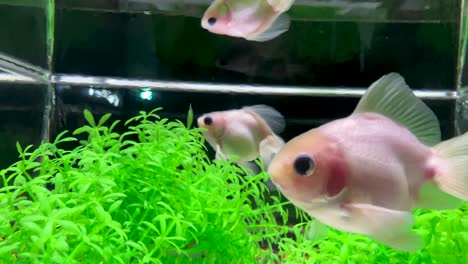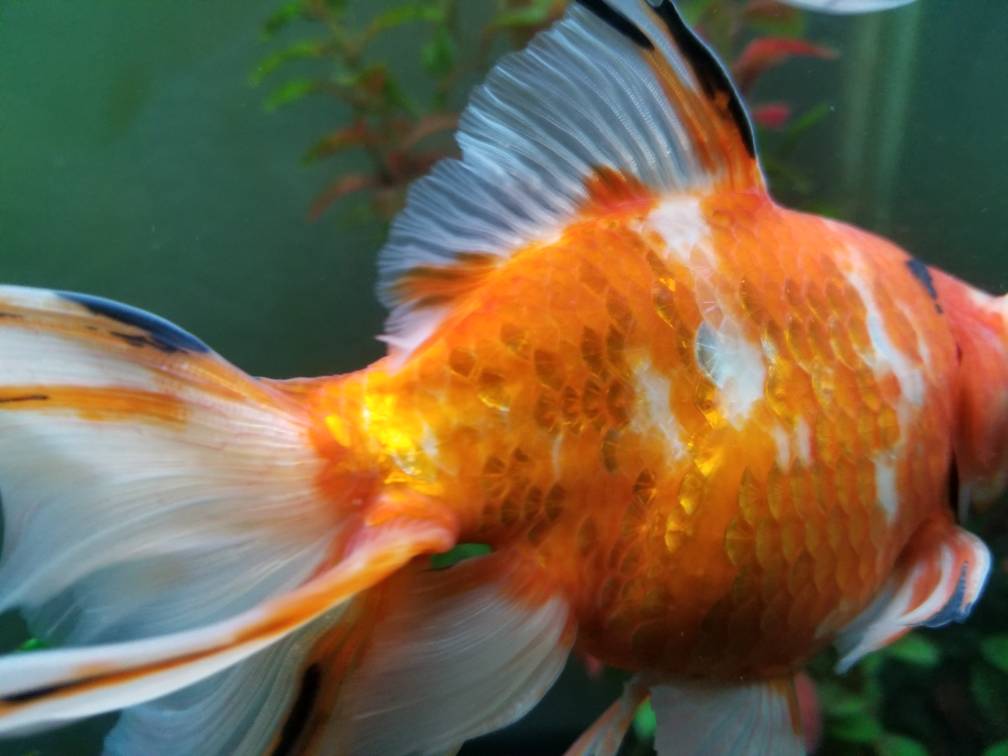
Goldfish Loss Scales is a topic that may not be commonly thought about, but is significant nonetheless. Just as a paper cut can be a minor annoyance for humans, losing a scale can be a similar inconvenience for a goldfish. This guide will delve into the anatomy of goldfish, with a focus on the importance and structure of their scales. While they may seem like merely shiny adornments, they play essential roles in the health and well-being of these aquatic pets.
Loss of scales in a goldfish can happen for various reasons. It could be a result of a rough encounter with the decorative castle in their tank, a run-in with a pesky parasite, or even due to an environment that’s not quite right for them. In this guide, we will investigate the usual suspects behind scale loss, recognize its signs, and explore preventive measures and treatments to ensure your goldfish continues to swim happily and healthily.
Goldfish Anatomy Basics
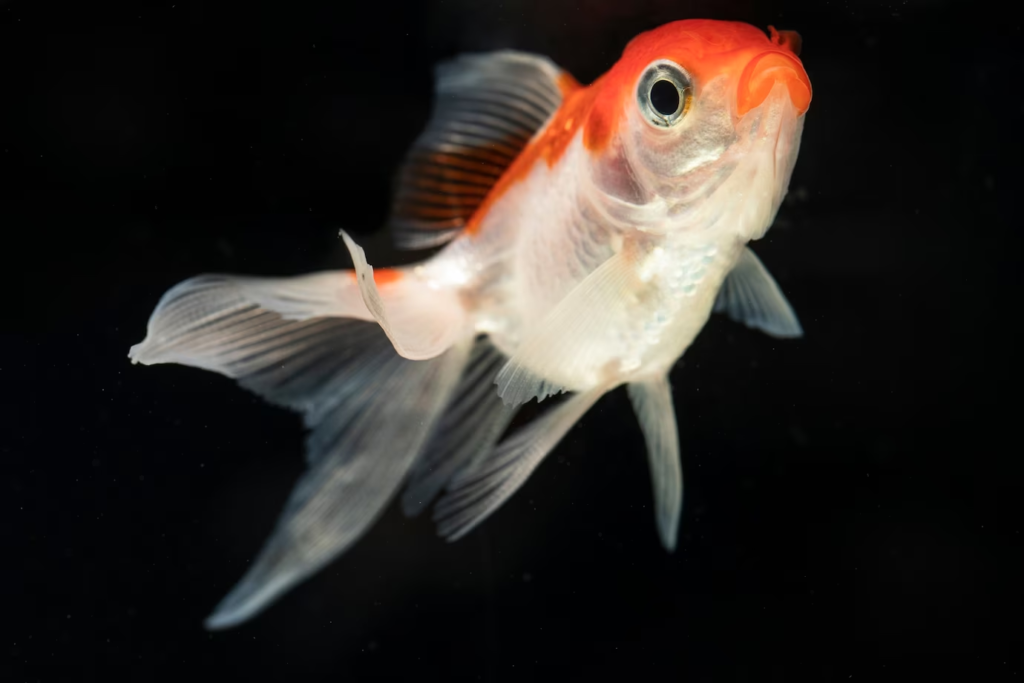
Let’s embark on this fishy voyage starting at square one, the goldfish and its sleek, shiny body. First stop? Scales.
The Purpose and Importance of Scales in Goldfish
Believe it or not, scales are quite the fashion statement in the aquatic world. Beyond glittery aesthetics, they serve a super important role. Like a knight’s armor, scales safeguard against infections, injuries, and the occasional grumpy tank mate. They also help Bubbles (your goldfish, I assume) control buoyancy and movement.
What would a poor goldfish do without its scales, you ask? Well, imagine going about your day in your birthday suit. It’s a no from me too!
Basic Anatomy of a Goldfish’s Scales
On a closer glance, scales are more than just sparkly coat. They’re finely organized layer of bony plates, soaked in color pigment, giving goldfish their glamorous looks. Got a goldfish flaunting multi-colored scales? Give it an appreciative nod. That chameleon-like change is all thanks to special cells called chromatophores.
And you thought your skincare routine was intense.
Right! Now that you’re familiarized with the importance and basic working of goldfish’s bling-bling (aka scales), let’s delve into what can go wrong with them and how you can play the good Samaritan. Onward, to troubles of the scale-y sort!
Common Causes for Scale Loss in Goldfish
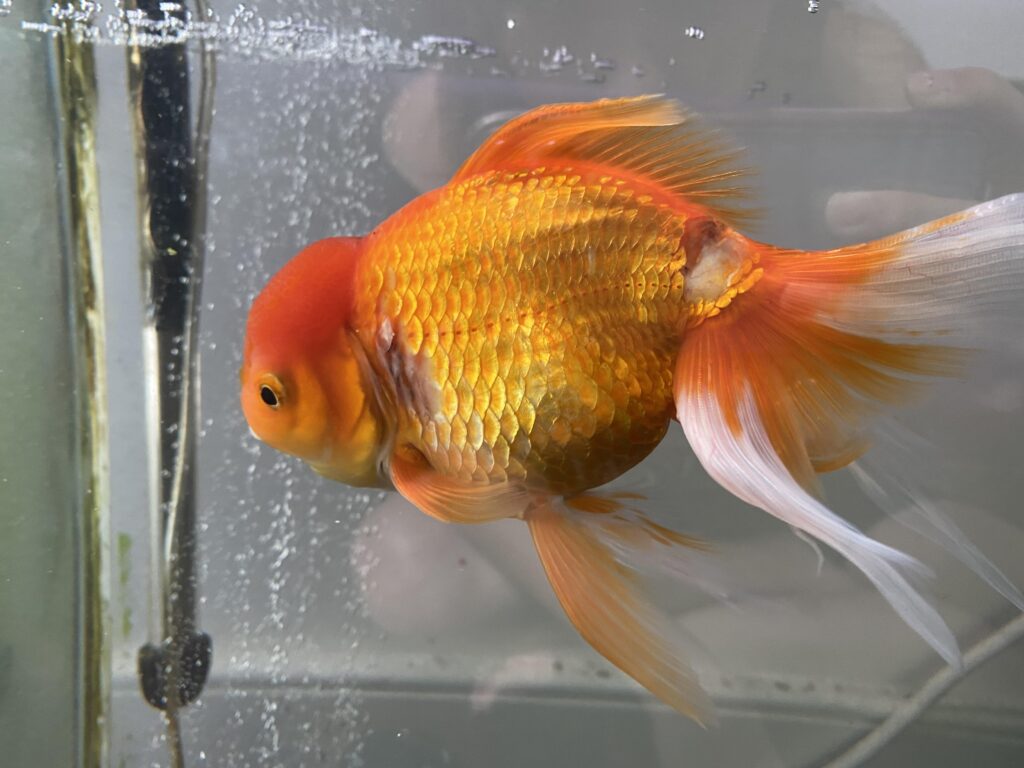
Ever looked at your beloved goldfish and thought, “Where did Sushi’s scales go?” Well, it’s a fishy problem that’s more common than you think. Let’s dive deep and explore some causes of this scale loss.
Physical Injuries
Goldfish, just like playful kittens, can be quite active in their tanks. In their enthusiasm, they can sometimes injure themselves against sharp or abrasive tank décor.
To keep your goldfish safe, choose smooth rocks and soft plants. Proper substrates can also make a big difference in preventing injuries. For more information on the best substrates for your goldfish tank, check out our article on the 5 Best Substrates for Goldfish Tanks of All Sizes. For plant options that can provide natural hiding spots and grazing opportunities, read 10 Best Live Plants for a Goldfish Aquarium.
Parasitic Infections
You’d be surprised how many uninvited guests can crash your goldfish’s party. Parasites like flukes and anchor worms not only make an unwelcome appearance but also damage your fish’s scales. It’s akin to having an unwelcome house guest who overstays and damages your interiors. Not cool, parasites. Not cool.
To delve deeper into these pesky intruders and how to combat them, check out The Hidden Peril of Flukes in Goldfish and Anchor Worms in Goldfish: A Comprehensive Guide. Being informed is the first step in keeping your goldfish safe and healthy.
Poor Tank Conditions
Your goldfish’s tank is its world, so it’s essential to keep it in top-notch condition. Think less of a Dirty Harry scene and more of a Jacques Cousteau underwater wonderland. When a tank isn’t maintained properly, your goldfish’s scales can suffer. Overcrowding, incorrect pH levels, inadequate filtration, and unsuitable water temperature could each be responsible for scale issues.
For guidance on tank size and space requirements, read our article How Much Tank Space Do Goldfish Need? and to find the perfect tank for your finned friend, check out the 10 Best Goldfish Tanks on the Market. Proper care and maintenance can make all the difference in your goldfish’s health and happiness.
Goldfish Diseases
Did you know goldfish can fall ill? They don’t just float upside down for sheer amusement. Conditions like Dropsy or Fin Rot can ail them. If your goldfish starts to appear less radiant and more weary, disease might be lurking.
Just as Auntie Jane always remarks, “There’s a reason for everything.” Familiarize yourself with these conditions. For in-depth knowledge, consider reading our articles: Dropsy in Goldfish: Decoding the Bloating, Understanding and Treating Goldfish Fin and Tail Rot, and Common Diseases for Goldfish: What You Need to Know. Armed with this information, you’ll be better equipped to discern any troubling signs in your aquatic companion. As we dive into the next section on identifying the S.O.S signs of scale loss, who knows? You might just become the Sherlock Holmes of the aquatic realm!
Symptoms and Signs of Scale Loss

Talk about goldfish sorrows? Goldfish loss scales is like a goldfish bad hair day, except it’s scales, and we’re not talking style cuts here! So, how do you identify this goldilocks predicament? Let’s see.
Physical Appearance
The first clue is physical appearance. No, your goldfish hasn’t joined the glitterscales gang overnight. If you see missing scales, exposed skin or even bleeding, it’s scale loss, folks! Some goldfish might look like they cosplayed a tiger with reddish or brownish streaks. It’s like a bad fish tan really, yet far from festive.
Remember, it’s not a goldfish makeover. It’s crucial to address this immediately for their health!
Behavioural Changes
Has your goldfish been acting a bit fishy? Eh, sorry, I had to say it. But really, watch out for odd behaviours. Look for changes like less swimming or more rubbing against objects. Imagine wearing an itchy sweater – all day, every day.
If they’re doing the aqua-boogie or hiding more, it’s a sign they’re uncomfortable. They’re telling you, “Help, it’s more than just a fashion crisis!”
Health Complications
Unfortunately, scale loss isn’t just a superficial woe. The seriousness can scale up, leading to health complications. This might include infections or increased vulnerability to diseases. Think of scales as their protective clothing. This isn’t just about fashion failures; it’s about health hazards too.
In the next part, we’ll talk about how to prevent these bad scale days for your goldfish. Because frankly, nobody wants a fish out of water angst.
Preventing Scale Loss
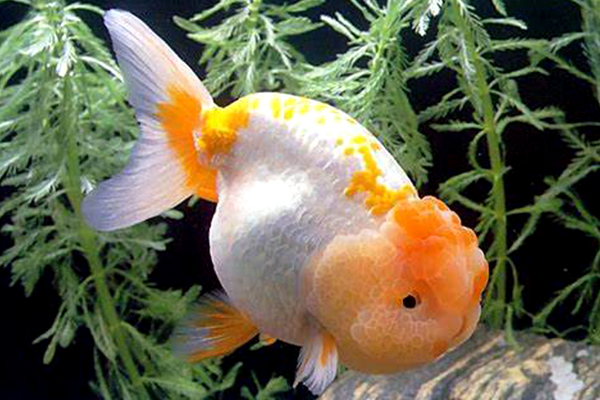
So, with the scary stuff out of the way (losing scales sounds spooky, doesn’t it?), we’ve arrived at the light at the end of the tunnel. If you’ve been nodding along, you’re ready to brave the journey towards turning the tide. Let’s dive right in and see how we can prevent scale loss in our scaly buddies.
Proper Tank Maintenance
Remember, prevention is always better than cure, and it applies to your goldfish just as much as it does to us. While your fish can’t tidy up their living space, you can! Proper tank maintenance is your first line of defense in preventing health issues. Be vigilant for uneaten food, decaying plant matter, and other detritus. Regularly changing the water is akin to giving your goldfish a refreshing gulp of fresh air.
Just finished cleaning the tank? Great work! It’s now time to focus on what goes on the dining table. Proper feeding is crucial to your goldfish’s health, so make sure to provide a balanced diet.
For a comprehensive guide on maintaining your goldfish’s home, check out our article: The Complete Guide to Aquarium Maintenance. It offers all the information you need to ensure a clean, safe environment for your aquatic friend.
Balanced Diet
Before you reach for that box of goldfish flakes, stop! Sure, it’s convenient, but in the long run, feeding your fish a varied diet is more beneficial. Goldfish, like you and me, need a balance of proteins, fibres, fats, and carbs. Spirulina, peas, bloodworms, let’s mix it up! But remember, overfeeding is a road to disaster. Once or twice a day, only as much as they can eat in a minute or two.
Got the menu sorted? Way to go! But we’re not done just yet. It’s time to pay a visit to the ‘fish doctor’.
If you need more information on selecting the best food for your goldfish, we’ve got you covered. Check out our article, Discover the Best Foods for Your Goldfish, which details the benefits of different food types. For a quick guide on the top diet options for your finned friend, take a look at our list of the 5 Best Diet Foods for Your Goldfish. Finally, if you’re concerned about overfeeding, we have some helpful tips in our article, Strategies to Prevent Overfeeding Your Goldfish.
Regular Health Checks
Just as we have periodic health check-ups, our goldfish need them too. Observing their behavior, checking their scales, eyes, and gills for any changes can prevent potential problems. Healthy, happy fish are active with bright, shiny scales.
Phew! We’ve just covered some serious ground in preventing scale loss! Breathe a sigh of relief but keep the momentum going, as we dive into our next section, ‘Treatment Options for Scale Loss’. Let’s explore the remedies as vast as the ocean. Buckle up and let’s dive.
Treatment Options for Scale Loss in Goldfish
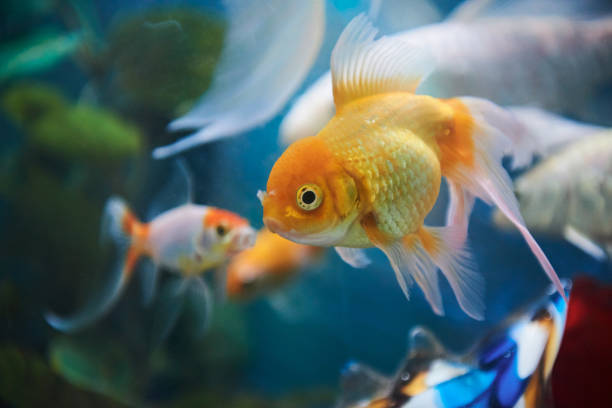
Goldfish aren’t just a pet, they’re your finned friends. Thus, when they lose scales, you wish to be the Florence Nightingale of the fish world. But how exactly do you do that?
Medication and Treatments
Like humans, goldfish can benefit from medicine when they’re under the weather. Discuss the scale loss with a pet store specialist or even a fish veterinarian. They might suggest antibiotics or medicated bath treatments. It’s not fish spa day, but goldfish don’t refuse free pampering. A treatment bath makes them feel better.
Melafix is another option that can be helpful in treating scale loss in goldfish. It is an all-natural treatment made from tea tree oil, known for its antibacterial properties. Melafix can help with healing open wounds, ulcers, and damaged fins. It is gentle on the fish and can be used in conjunction with other treatments as recommended by a veterinarian.
Next, we will talk about long-term care and recovery. It’s about dedication, tender care, and the right environment.
Long-term Care and Recovery
Nothing beats consistent care. Every goldfish, healthy or healing, loves clean water. Regular water changes are essential.
Keep bacteria in check with a good tank-cleaning routine. Healthy and balanced diet? Check. Enough space for your goldfish to exercise its fins? Double check.
Now that your goldfish is on the road to recovery, let’s discuss situations when you need to call in the pros.
For more tips on how to maintain your aquarium, check out our article, The Weekly Maintenance Checklist for Your Planted Aquarium, which offers a step-by-step guide on the tasks you should perform to keep your tank in top shape. Additionally, if you’re interested in adding frozen foods to your goldfish’s diet, be sure to read our article on The Best Frozen Foods for Goldfish Nutrition. It will help you understand the benefits of various frozen foods and how they can contribute to the health of your goldfish.
When to Consult a Veterinarian
While you’re becoming pretty expert in fish care, don’t be shy about reaching out for professional help. If there’s persistent scale loss despite your efforts, it’s time for a vet visit. Remember, a good pet parent knows when to ask for guidance.
Wrap Up
Knowing your goldfish anatomy, specifically scales, is crucial as they serve vital purposes. They’re not just aesthetics, but a protective layer, and understanding its details aids in spotting issues early. Causes of scale loss range from physical injuries, parasitic invasions to poor tank conditions and specific goldfish ailments. These problems are manifested in observable changes in your goldfish, be it physical or behavioural shifts, which may escalate into health complications.
You can avert scale loss with proper tank maintenance, a balanced diet, and regular health examinations. When symptoms emerge, various treatment options are available – these include specific medications, implementation of long-term care, and seeking professional guidance from a veterinarian. Always remember, your finny friend’s wellbeing is in your hands, or should I say, your tank!
Frequently Asked Questions (FAQ)
Question: What exactly are scales on a goldfish and their importance?
Answer: Scales in a goldfish act as the key protective gear, safeguarding internal organs from external damage, and also help in maintaining fluid balance.
Question: What are the common causes of scale loss in goldfish?
Answer: Scale loss is often due to physical injuries, parasitic infections, improper maintenance of tank conditions, or specific diseases that goldfish might encounter.
Question: What are the noticeable signs of scale loss in goldfish?
Answer: Common signs include visible patches of scale loss, changes in fish behavior, such as erratic swimming and loss of appetite, and other health complications.
Question: How do I prevent scale loss in my goldfish?
Answer: You can prevent scale loss by maintaining the proper tank conditions, providing a balanced diet, and doing regular health checks.
Question: What are the treatment options for scale loss in goldfish?
Answer: Treatment includes specific medications, long-term care to ensure full recovery, and consulting a veterinarian when symptoms persist.
Question: What should I do after treatment for scale loss in my goldfish?
Answer: Post-treatment care involves maintaining a healthy environment, regular health assessments, and ensuring your goldfish isn’t susceptible to recurring scale loss problems.


